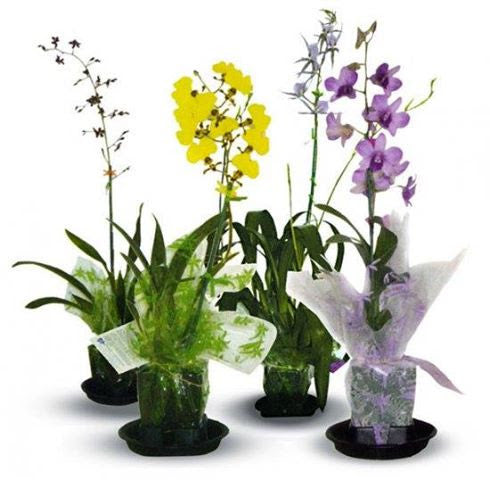How do I water my orchid?

Use a pencil or wooden skewer to determine whether an orchids needs to be watered.

Avoid over watering which leads to the demise of many more orchids than under watering. Constant wetness will cause the roots to rot, which leaves the plant without a means for taking up nourishment which then causes the leaves to droop and will eventually kill the plant. The classic advice is to water the day before the plant dries out. If you have to let the plant go dry to figure out what a dry plant weighs, it will not kill the plant and will make you a better grower. Another measure is to use the pencil trick (the point of a sharpened pencil, when inserted into the medium, will darken with moisture if the plant has enough water). And, there's always the old standby - put your finger in the mix. If it feels wet, it is wet. If you aren't sure whether it is time to water, wait one more day.
"Evenly moist," while the most commonly given advice on watering, is the least easily explained. Because most plants are grown in plastic containers a good diagnosis is the weight of the plant: heavy - does not need watering; light - does require water. With a little practice, one can easily tell the amount of moisture remaining in the container.
Water your orchid early in the morning. This insures complete water evaporation on the foliage as well as the crown by nightfall. If your home is very warm or has low humidity you will most likely need to water more often. The best place to water your plant is in the kitchen sink. Use lukewarm water (do not use salt softened or distilled water) and water your plant for about 15 seconds and be sure to thoroughly wet the media. Then allow the plant to drain for about 15 minutes. It may appear dry but it has had enough water. After the plants are watered, they should be placed so that the pots do not stand in water. Some people like to place the pots on "humidity trays" or in trays or saucers of gravel or pebbles and water. The pot is placed on the pebbles above the water line. This helps to insure that the base of the pot is not immersed in water, increases humidity for the plant, and provides some air circulation under the pot. American Orchid Society www.aos.org
